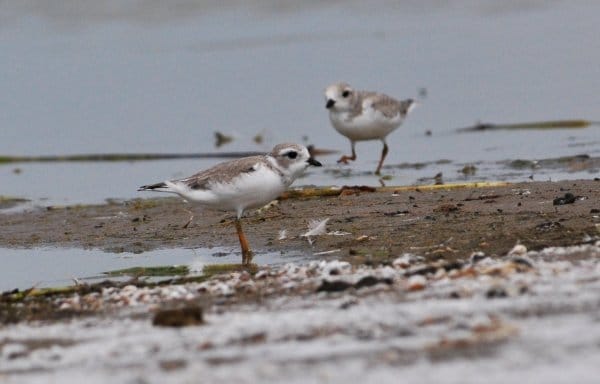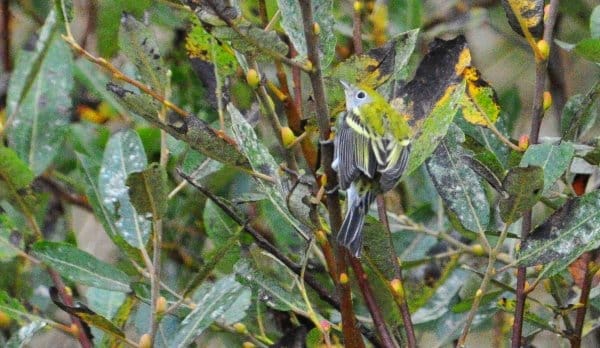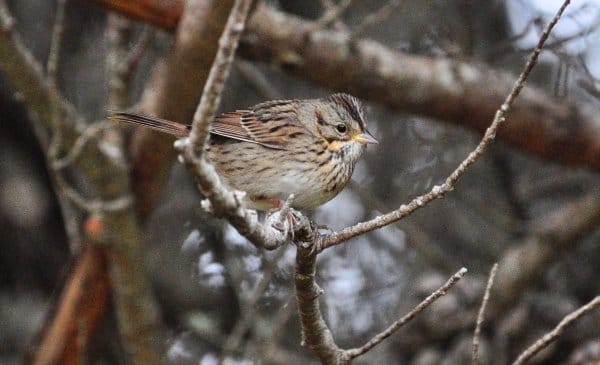Delicious autumn! My very soul is wedded to it, and if I were a bird I would fly about the earth seeking successive autumns. – George Eliot
Indeed….very much so. I think most birders can understand this sentiment, whether you care for the weather or not. As birders know, weather, going back to school, football, The World Series, and fall colors all pale in comparison with the spectacle of fall migration. It is the time of year of boundless possibilities and frustrating identification challenges (well, for most of you). I personally find great pleasure this time of year in identifying silent Empidonax flycatchers…I have discovered a special formula to identify them based on the arrangement of their rictal bristles. No big deal. Seabirding may also be excellent in late September. I prefer to observe storm-petrels from at least a mile away, because any closer and its just not a challenging i.d. to make. In the past several years I’ve been developing an entirely new seabirding strategy based on something the birds do themselves….tracking your quarry by scent. If a Short-tailed Albatross can smell a school of squid from over the horizon, then why can’t I smell a flock of Short-tailed Albatross from over the horizon? Results have been very promising so far, although attempting to identify the color-morphs of Pomarine Jaegers using nothing but your nose can be a bit tricky.
Who am I kidding? It’s really easy. I am, after all, the archetypal birder of our generation. I highly recommend attempting this tactic of bird identification sometime, preferably on a boat crowded with other birders…
In parts of the U.S., Piping Plovers begin their fall migration as early as July and can arrive on their wintering grounds on the Gulf Coast in August. Photographed at White Lake, North Dakota.
I write to you this September from San Francisco, California. Californian birders live for fall. They may as well go into a birding coma for the rest of the year. Sure interesting and rare birds may arrive any time of year, but it is nothing compared to what shows up in fall migration…heart-stopping megavagrants like Common Ringed Plover and Northern Wheatear have already passed through, and there is plenty of time to go.
We need these birds. If a birder has a poor fall, he or she can fall into a deep state of Vagrant Withdrawal, characterized by insomnia, a racing heart, and the horrible urge to blind oneself in punishment for failing to see all that one can see. As you can see….fall birding is not for the light-hearted. You must have the heart of a lion. It is a well-known fact that Seasonal Affective Disorder only strikes birders who were unable to go birdwatching enough during the rush hour of southbound migration.
Beginning in July, birders scour wetlands for shorebirds that turned the wrong way, either somewhere in the Canadian Arctic or on the Russian coast. Pelagic trips are running in earnest up and down the state by August, and one can find migrant landbirds moving through many areas later in the month. By September, migrant birds and birders alike are firing on all pistons, and not until November do things seem to settle down. After that, its a long winter of scouring city parks for passerines and looking through vast flocks of waterfowl for the occasional odd goose or eider…which is fun, but its no September.
Chestnut-sided Warblers have been showing up in unusually high numbers in parts of California this fall. This gift of a green bird was at Point Reyes.
This, the last week of September, is the holiest week of the year for California birders. Many serious birders fast for the entire week, because they are far to busy birding to actually eat (the hunger also sharpens their senses). The simple act of choosing what region to bird goes from simple decision-making for most of the year to a personal crisis. The thought of missing a one-day-wonder megavagrant sends chills down the spine. Offshore, pelagic birders roam the seas for birds like Streaked Shearwater and Great-winged Petrel. On the Farrallon Islands, San Francisco County’s own megararity trap, volunteer researches hope for everything from Red-footed Booby to Golden-cheeked Warbler. Other coastal birders lurk in woodlands for Dusky Warbler and check fields and marshes for Buff-breasted Sandpipers and Red-throated Pipits. In desolate Death Valley, diehard birders stagger through the heat to desert oases that have produced everything from Smith’s Longspurs to Purple Gallinule in previous falls.
Lincoln’s Sparrows are now returning to much of the country after a tortuous absence of many months. Photographed at Point Reyes, CA.
We must come to grips with the season…seize your binoculars with vice-like strength, and do not let go until Thanksgiving. The birds will appear for you. We will ride into the winter like champions*, our hearts and minds filled with memories of birds we could not have dreamt possible.
Thanks to my amazing colleague Seagull Steve for providing today’s photographs. To anyone who dared to challenge me on bird identifications from last month’s quizzes, I can only give you partial answers…the duck bill is none other than that of a female Lesser Scaup, and the albino gull is truly unknown….an annual visitor to San Francisco’s Golden Gate Park, it has variously been called a Herring Gull, Western Gull, Glaucous-winged Gull, and Western X Glaucous-winged Gull. Even the Best Birder In The World can be confused by birds with no plumage features…how embarrassing.
* This may actually depend on how much humiliation The Big Year brings to the birdwatching community…we will know soon. It comes out October 14.














Love live the glory days of Fall and love live Felonious Jive!